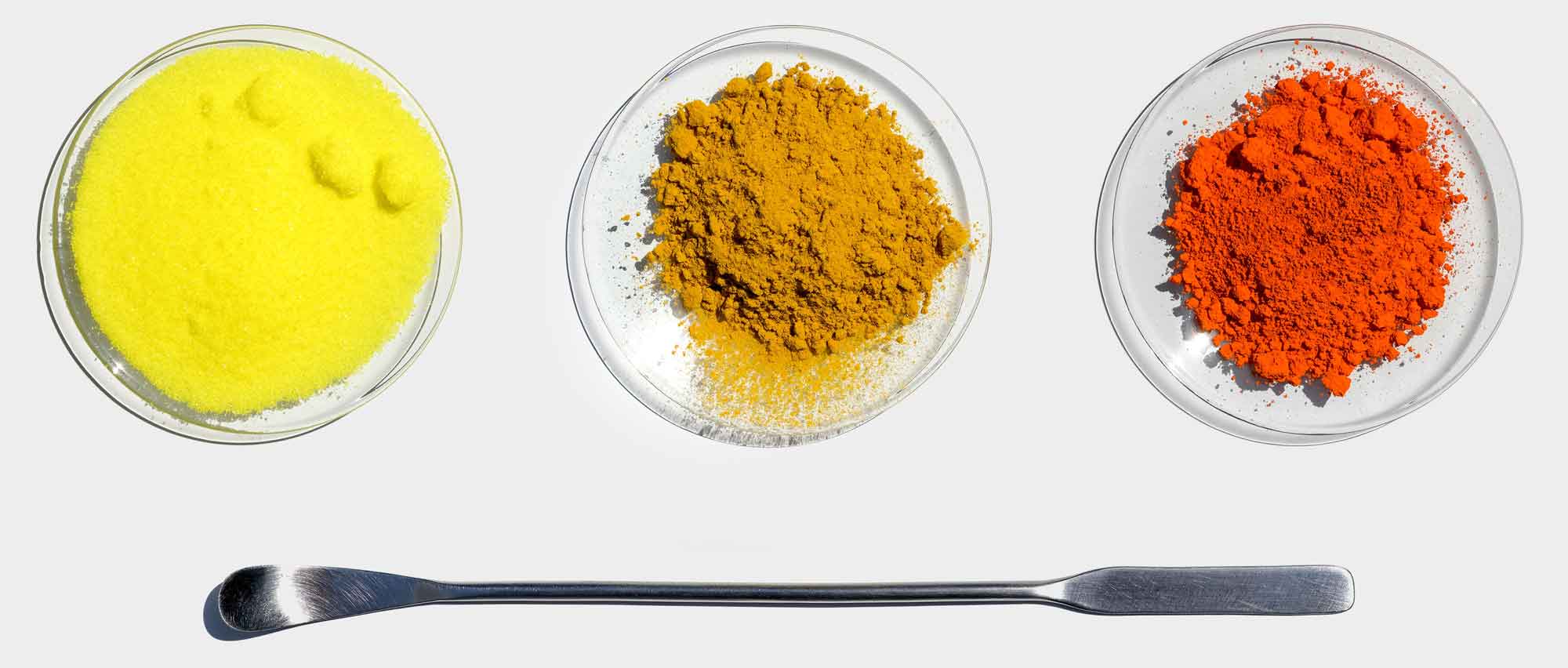
The reaction of natural and synthetic mineral pigments with binders containing lipids, such as egg yolk, drying oils, etc., has been reported by various authors.
Generally, the formation of metallic soaps with the free fatty acids in the binders is assumed to be the reaction. These metallic soaps may act as driers, accelerating the oxidation and polymerization of the binder and providing a hard and resistant pigmented film.
Usually, and without much verification, pigments such as lead white, umber, zinc oxide, etc., are said to accelerate the drying of binders. The synthesis and use of metal soaps, such as those from lead, cobalt, and manganese, are typical in the paint industry and are used as driers in artists' colors.
A study was initiated a few years back that produced a definitive answer regarding the formation of metal soaps by natural and synthetic mineral pigments. The researchers studied the formation of metallic soaps of pigmented paint films when mixed with linseed oil.
Non-Reactive Pigments
Lead sulfate
Chrome yellow
Chrome orange
Red ocher
Yellow ocher
Sienna
Umber
Manganese brown
Manganese blue
Manganese black
Cadmium yellow
Zinc yellow
Azurite
Copper blue
Malachite
Cobalt blue
These pigments did not form metallic soaps, so it is reasonable to deduce that they do not react with linseed oil. Interestingly, some of the pigments in the group above have long been designated reactive pigments, forming metallic soaps with linseed oil.
Reactive Pigments
Minium (red lead)
Massicot (litharge)
Cobalt black oxide
Casell yellow
Lead white
Verdigris
Naples yellow
Cerulean blue
Zinc white
Cobalt blue-green
Cobalt green
Bismuth white
These pigments are arranged according to their reactivity (from the most to the least) in forming metallic soaps.
References
-
Gettens RJ, et al., ‘Lead White,’ Studies in Conservation, 12, 125, 1967.
-
Kühn H, ‘Lead Tin Yellow,’ Studies in Conservation, 13, 7, 1968.
-
Mülethaler B and Thissen J, ‘Smalt,’ Studies in Conservation, 14, 47, 1969.
-
Ktihn H, ‘Verdigris and Copper Resinate,’ Studies in Conservation, 15, 12, 1970.
-
Mayer R, ‘Materiales y Técnicas del Arte', H. Blume Ed., Madrid, 1993.
-
Doerner M, ‘Los Materiales de la Pintura', 5th ed. Ed. Reverté, Barcelona, 1991.
-
Bailey AE, ‘Aceites y Grasas Industriales', Ed. Reverté, Barcelona, 1961.
-
Luxán MP and Dorrego F, ‘Reactivity of earth and synthetic pigments with linseed oil,’ Surface Coatings International Part B Coatings Transactions 82(8): 390–402.












